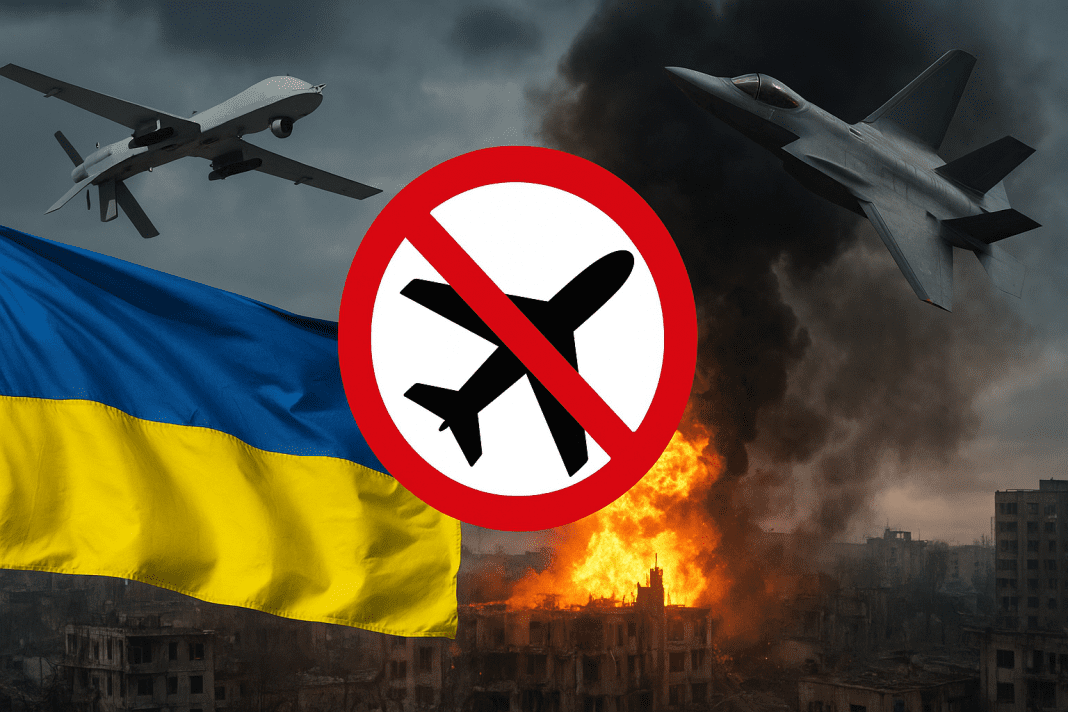For more than three years, Ukraine has been facing heavy attacks from Russian forces. The Russian military has used drones, missiles, and crewed bombers to strike cities and military bases across the country. One of the most dangerous weapons used is the hypersonic Iskander missile, which recently hit the government’s headquarters in the capital city. These weapons have destroyed homes, schools, and hospitals, affecting both soldiers and regular citizens. Ukraine has been desperately calling for a no-fly zone to stop these attacks and prevent further damage from Russian aircraft and missiles.
The Growing Threat from Russian Attacks
The Russian strategy has been similar to its past actions in other war zones. Bombs and missiles are often aimed not only at military targets but also at areas where civilians live. The goal is to break the spirit of the people by causing fear and destruction. This has led to thousands of people losing their lives or being displaced from their homes.
Despite these attacks, NATO, the alliance of Western countries, has so far refused to set up a no-fly zone over Ukraine. A no-fly zone means stopping enemy aircraft and missiles from flying over a specific area. If NATO were to enforce this, it would require fighter jets to patrol the skies over Ukraine and shoot down any Russian planes, missiles, or drones that enter the airspace. This is a very strong step and could lead to direct fighting between NATO forces and Russia.
Ukraine faces impossible choice as Putin seeks strategic land he failed to conquer
Why NATO Has Been Hesitant So Far to Create a No-Fly Zone
The main reason NATO has not set up a no-fly zone is the fear of worsening the situation. If NATO jets start engaging Russian aircraft, the conflict could quickly spread beyond Ukraine. Fighting might escalate on the ground and at sea, especially in the Black Sea region. There is also concern that Russia could respond with cyberattacks against NATO countries or even threaten the use of nuclear weapons.
Because of these risks, NATO has focused on providing Ukraine with weapons, intelligence, and other support while avoiding direct combat. The alliance has also imposed economic sanctions and diplomatic pressure to isolate Russia. However, these actions have not stopped the relentless attacks.
Ukraine joins global allies to shatter elite hacker ring behind $80 million ransomware chaos
Recently, the situation has become more alarming. Russian drones entered the airspace of Poland, a NATO member country. This violation triggered emergency discussions among NATO leaders. It raised fears that the war could spill over into neighboring countries. Reports also suggested that drones might have crossed into Romanian airspace as well. These incidents have pushed NATO to reconsider its stance.
Some officials are calling for NATO to allow member countries to shoot down drones or other flying threats over Ukrainian skies. This move would be a step closer to establishing a full no-fly zone, which could significantly reduce the ability of Russian forces to launch attacks from the air.
How a No-Fly Zone Could Help Protect Ukraine
NATO already has strong air defense capabilities that could support a no-fly zone if decided. The Ramstein Air Base in Germany is one of the largest military bases in Europe. It serves as the command center for air operations in Europe and Africa. NATO’s air operations rely on advanced technology, including special aircraft called AWACS, which provide radar surveillance and tracking.
The alliance has more than a dozen of these AWACS planes, enough to monitor Ukrainian airspace and nearby regions all the time. NATO’s new operation to reinforce its eastern border, known as Operation Eastern Sentry, includes cutting-edge fighter jets like the F-35 Lightning. These jets are among the most advanced in the world and are capable of intercepting enemy aircraft and missiles.
Other countries are also contributing their fighter jets, such as Sweden’s JAS 39 Gripen, France’s Dassault Rafale, and the Eurofighter Typhoon used by several nations. Joint exercises have shown that NATO’s communication systems and command networks are highly efficient, allowing different forces to operate together smoothly.
In addition to air defenses, NATO is considering imposing stronger sanctions on countries that continue to trade with Russia. Freezing Russian assets held in foreign banks, including about $300 billion, is another option being discussed. Cutting off Russian oil and gas supplies is also seen as a way to limit Russia’s ability to finance the war.
Ukraine has also been provided with longer-range missiles, drones, and targeting technology to help defend its territory and destroy enemy equipment. These tools aim to weaken Russia’s ability to launch attacks and maintain its supply lines.
A no-fly zone could drastically reduce the destruction caused by Russian airstrikes. By preventing Russian aircraft from entering Ukrainian airspace, the attacks on civilian areas could be stopped or minimized. This would protect both the people and critical infrastructure in Ukraine.
A no-fly zone is a bold step, and it involves significant risks. Yet with Russia’s ongoing aggression and disregard for diplomatic efforts, many believe that stronger action is necessary to defend Ukraine’s sovereignty and safety.

